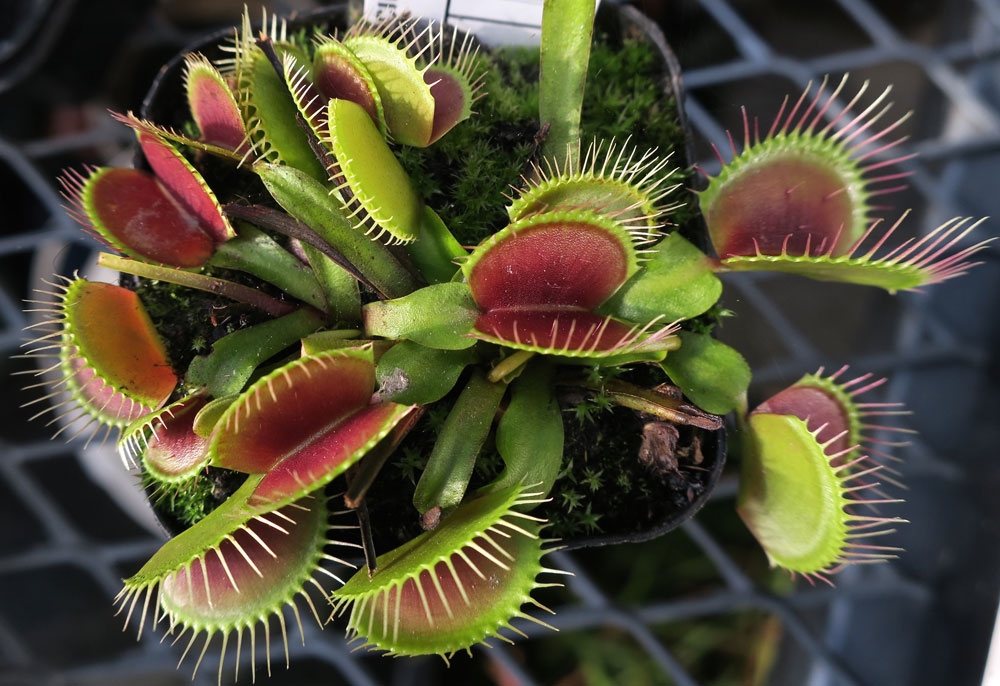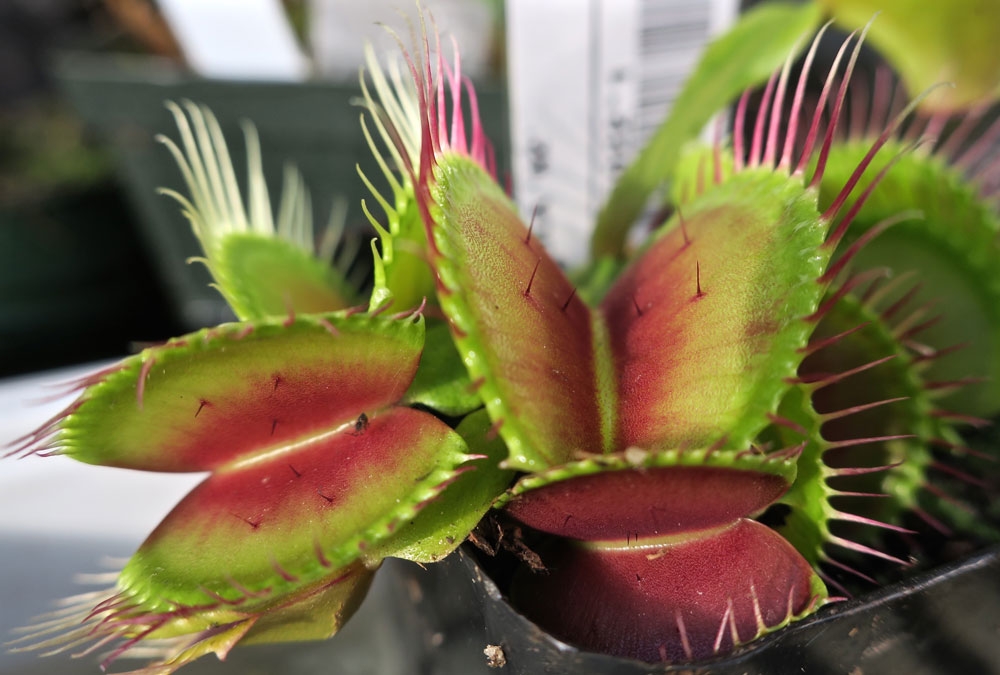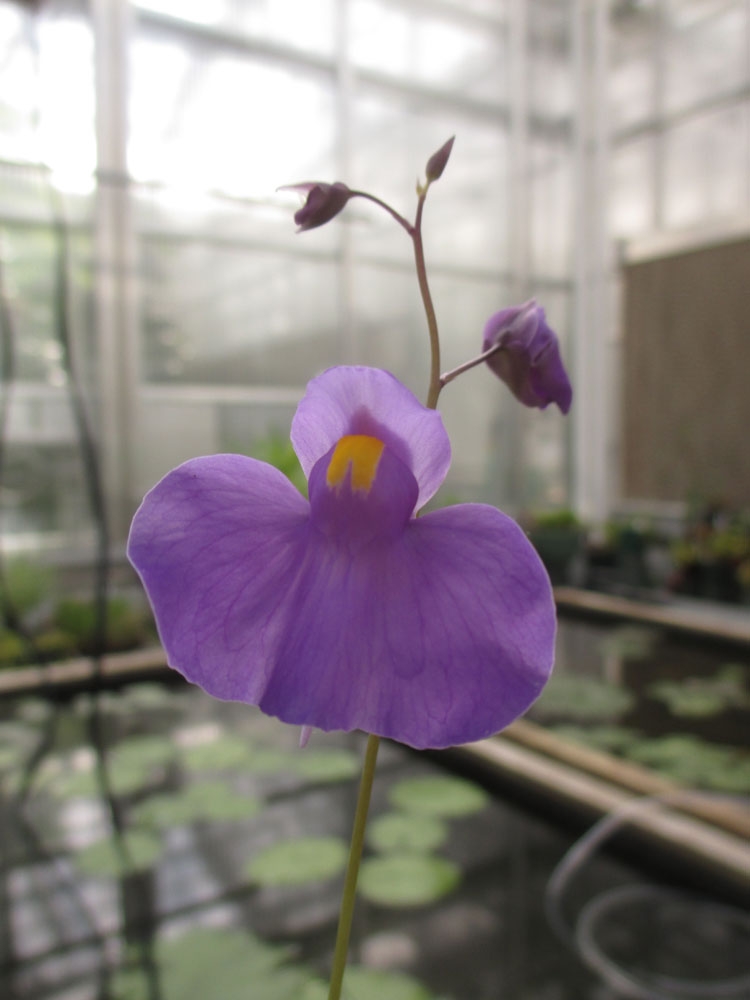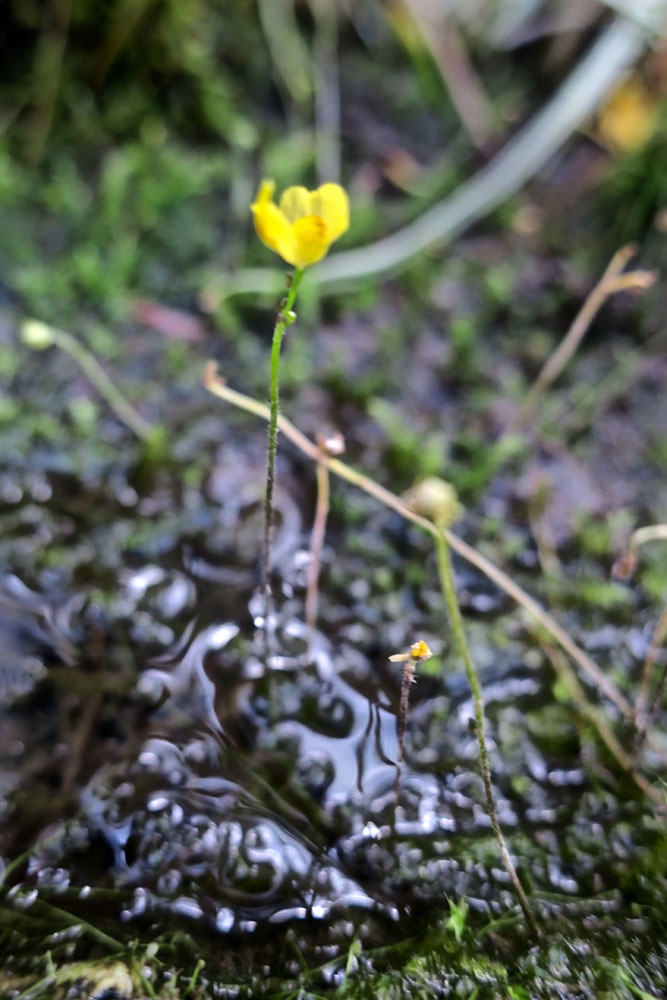Plant Predators: Active Traps
As Halloween draws near, it seems fitting to highlight a group of bloodthirsty plants that lure, capture and devour insects (and sometimes even small mammals) in order to survive in the nutrient-poor soils of their native habitats.
These carnivorous plants can be found growing around the world. The trapping mechanisms they use to capture their prey can be divided into three main categories: active, passive and sticky “flypaper” traps.
In this series of blog posts, we will take a look at predatory plants that exhibit each of these types of traps along with where they grow in the wild and where you can find them in the gardens.
Active Traps
Carnivorous plants that use active “snap” traps to capture their prey include Venus fly traps (Dionaea muscipula) and waterwheel (Aldrovanda vesiculosa).
Venus flytraps are the most easily recognizable predatory plants. Their native habitat is limited to a stretch of coastal plains in North Carolina and South Carolina. Trigger hairs are located inside each trap, which lies open waiting for an insect to crawl in. The sweet scent of nectar produced by the plant helps to draw in its unsuspecting prey. Once triggered, the trap closes and digestive enzymes are released to break the insect down into nutrients the plant can use to grow. Once digestion is complete the trap reopens, revealing the remaining exoskeleton of its prey.
A waterwheel plant has a trap that is very similar to those of flytraps, but they are submerged in water, much smaller in size and faster in action. They consist of a single species that is distributed around the world in parts of Europe, Asia, Africa and Australia. Its common name is derived from the way the traps are arranged in whorls around a central stem. Tiny aquatic insects trigger the traps to quickly snap shut when they brush against the trigger hairs.
Another variation of the active trap is the “suction” mechanism used by the traps of Utricularia species - commonly known as bladderworts. These remarkable carnivorous plants can be found in both terrestrial and aquatic habitats around the world. In terrestrial species, the tiny traps are located in the soil around the plant. These traps have trigger hairs located at the mouth of each trap which are activated when an insect brushes against them. Aquatic species also have traps which are activated when insects swim by and brush the trigger hairs. Bladderworts are the fastest acting of any carnivorous plants, taking less than a millisecond to suck in their prey.
- Venus flytraps can be found in a large terrarium located at the east end of the Orangery. Be sure to stop by to take a peek at them as you visit our Fiendish Flora exhibit in the Orangery, which features natural and manmade plant mutations.
- Terrestrial and aquatic bladderworts can be viewed on some Free Days at the Carnivorous Plant Education table.
- We hope to add waterwheel to our plant collections in the near future!
In the next blog post of this series, we will explore carnivorous plant species that use passive traps to lure, capture and devour their creepy, crawly victims.
Gallery




Comments
Venus flytrap
I would like to purchase and grow a Venus flytrap. Do you know a reputable dealer? Also a question for dormancy in Lakewood Co. I have an I heated garage but only a north facing window. Is that sufficient light for it to live through dormancy? If not, any suggestions? Thanks!
Add new comment